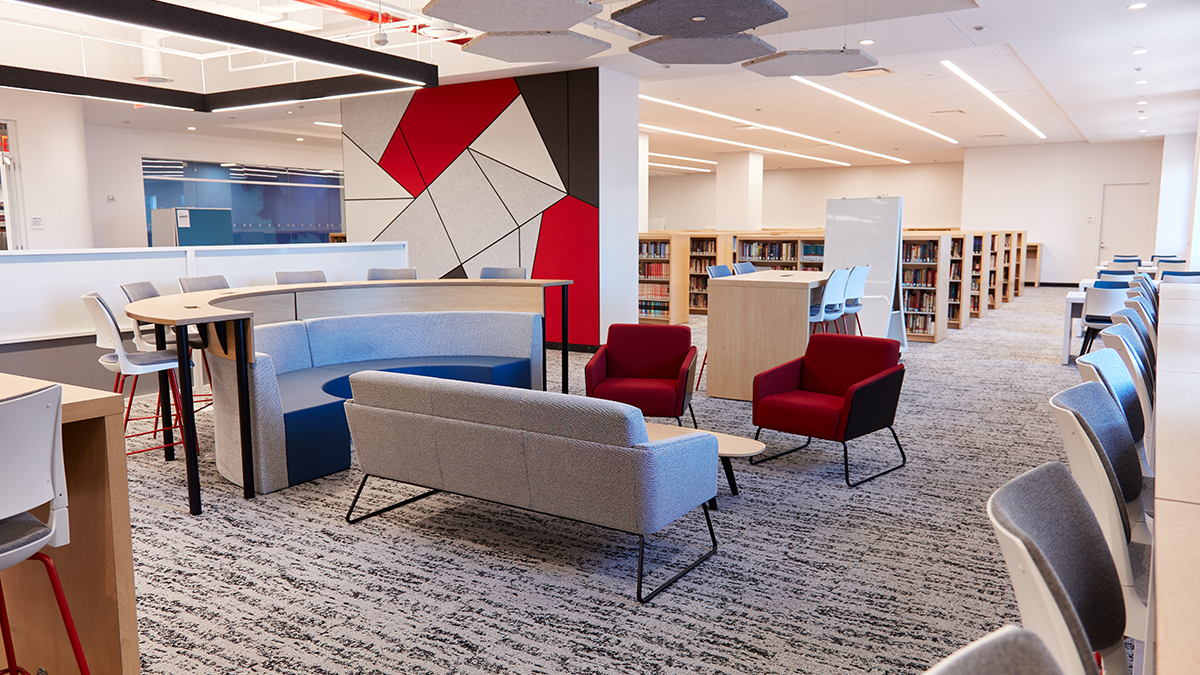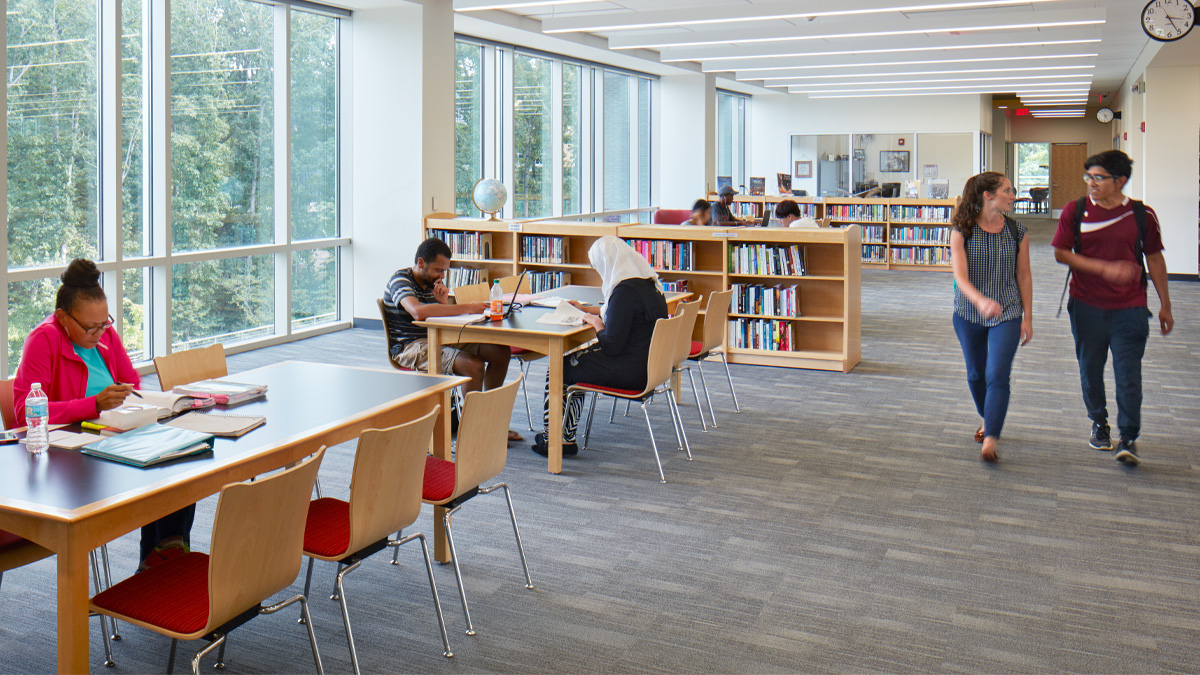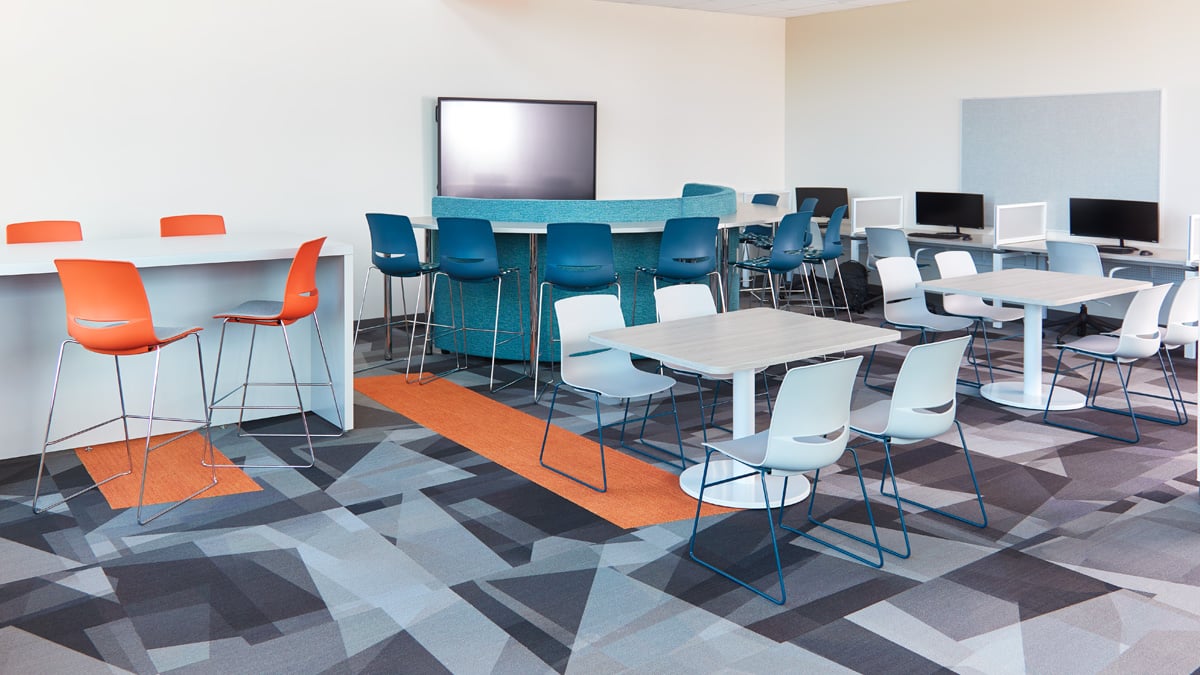- What's New
- Pricing & Purchasing
- Lead Times
- Literature & Samples
- Services & Warranties
- Careers
- Find a Rep

Exploring Library Design
College libraries are undergoing a rapid transformation. From storehouses of knowledge to vibrant community hubs, libraries are changing the dynamics of higher educational institutions.
To better understand interior design solutions that emphasize and improve student experiences, we completed extensive research in partnership with StudioFYNN. These findings revealed eight critical ways to view the dynamic shifts in physical space and student engagement.
8 Shifts in Higher Ed Libraries
With such significant and rapid change in libraries, these eight key shifts offered a series of lenses to understand major shifts in the needs of students and spaces.
![]()
Influenced by architecture, library spaces need to adapt to accommodate digital and print resources, along with individual and shared needs. While libraries are vital knowledge hubs, many must renovate existing spaces instead of expanding to nearby buildings.
![]()
Institutions should redesign existing spaces to meet user needs through human-centered design, aligning culture, function, and brand. Custom solutions are increasingly sought to address diverse space requirements, considering factors such as materials, biophilic design, acoustics, and lighting.
![]()
Libraries are key hubs for active learning in higher education, promoting collaboration and providing refuge from traditional classroom settings. They also increasingly serve as havens for personal rejuvenation and fostering a sense of belonging, reflecting a growing emphasis on well-being.
![]()
Colleges emphasize signature spaces like libraries and communal areas to showcase their unique brand and value. Alongside these traditional areas, there's a growing need for informal, creative spaces that encourage learning and personal development, mirroring the entrepreneurial spirit of start-ups.
![]()
Libraries are collaborative community hubs, requiring spaces that nurture both individual and collective experiences. Designating areas for 'me' and 'we' not only establishes physical boundaries but also cultivates desired mindsets and emotions, facilitating diverse experiences.
![]()
In the U.S., the age diversity of academic institutions reflects wisdom, often mirrored in traditional furnishings corresponding to the library's era. Institutions aim to harmonize tradition with modernity, continuously seeking a balance between honoring their history and embracing their future.
![]()
As libraries evolve, community engagement and librarian responsibilities remain crucial to service offerings and space planning. Librarians, as lifelong learners, play a pivotal role in enhancing community engagement across physical and virtual realms through planning processes.
![]()
Campus facilities' success depends greatly on designing for diverse usage times, accommodating quick use and long-term study needs. To ensure spaces align with user behaviors, integrate space utilization into the design process, balancing dedicated and transitional uses.
Thank you to the following institutions for their participation in this research: University of Pennsylvania's Integrated Product Design Program, CA College of the Arts, Clemson University, CUNY Baruch, Dartmouth College, The New School's Parsons School of Design, and UC Berkeley.
Defining the Library of Today


Library Design Inspiration
Find inspiration in these innovative spaces for your own library design renovation.
Download White Paper
Learn more about the transformation of college libraries in our comprehensive white papers.
Additional Content
Explore these insights on designing new solutions for your higher education library spaces.
 Blog
Blog
Explore essential design strategies for college libraries based on 10 key user experiences that inspire learning, foster community, and adapt to diverse student needs.
 Blog
Blog
Discover key design strategies for college libraries that promote well-being, community, and adaptable, engaging third spaces.
 Blog
Blog
Transform the design of your college libraries with insights from our latest research highlighting eight key shifts in campus community and innovation.

Podcast
The Future Role of Higher Ed Libraries
In this podcast, KI and StudioFynn explore how technological advancements and changing student needs are reshaping library spaces and institutional identities.

Podcast
The Evolution of the Campus Library
In this episode, Katie Clark and experts from Marquette University reveal how reimagined campus libraries are transforming into vibrant spaces for collaboration, tutoring, and student support.




















